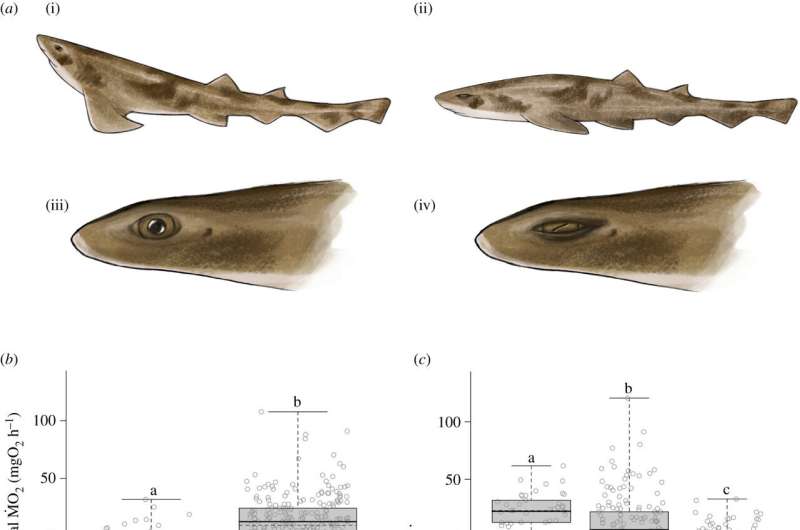March 9, 2022 report
Analysis of draughtsboard sharks' metabolic rates suggests they sleep

A team of researchers from La Trobe University, the University of Western Australia and the University of Auckland, has found evidence that at least one type of shark sleeps. In their paper published in the journal Biology Letters, the group describes measuring the metabolic rates of seven wild draughtsboard (carpet) sharks held temporarily in a tank and what it revealed about their possible sleep patterns.
Prior research has suggested that some species of sharks do sleep, while in other species it seems doubtful, as they need to keep moving in order to take in oxygen from the water. That research entailed shocking resting sharks to see if they respond as quickly as they do when active, for example. In this new effort, the researchers looked for more concrete evidence.
The team chose draughtsboard sharks because they live off the coast of New Zealand where the study was conducted, and because they are known to have rest periods. They captured seven of them and released them into large tanks at an outdoor lab facility with natural lighting—each was fed pilchards for two weeks before the start of the experiments and each was taken off food for 48 hours before the experiments started to make sure they achieved a post-absorptive state. The researchers measured the metabolism of the sharks using a submerged acrylic respirometry chamber over 24-hour periods, focusing most specifically on the shark's oxygen levels.
They found reduced oxygen levels in all of the sharks during resting periods, an indication that they were sleeping. They also found that the sharks closed their eyes while resting, another indicator of sleep, and that they tend to keep their bodies flat. The researchers note that such behavior is consistent with sleep in many other creatures, though they acknowledge that eye closure is not necessarily a sign of sleep, as other creatures are known to sleep with their eyes open, and there were some occasions when the sharks in the study did not close their eyes during rest periods.
The researchers conclude that the cumulative evidence is strong for sleep in draughtsboard sharks.
More information: Michael L. Kelly et al, Energy conservation characterizes sleep in sharks, Biology Letters (2022). DOI: 10.1098/rsbl.2021.0259. royalsocietypublishing.org/doi … .1098/rsbl.2021.0259
Journal information: Biology Letters
© 2022 Science X Network



















